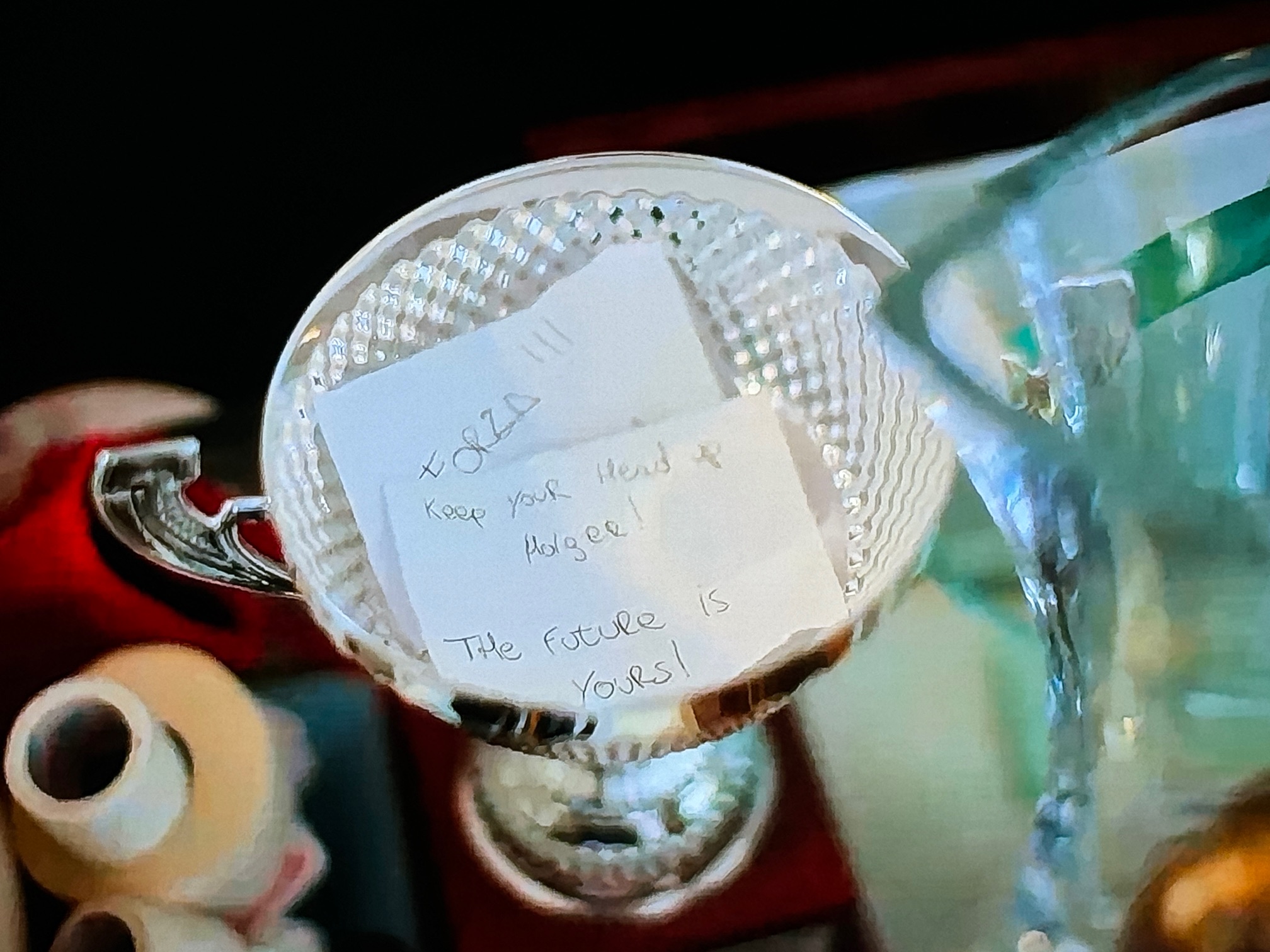Tennis Technology and Training
Throughout the history of tennis, there has been significant evolution in the construction and manufacture of the tennis ball. It is a good thing, because otherwise the sport would still be played with a ball made of leather stuffed with rags and/or horsehair. I sometimes wax nostalgic about the characteristic aroma of the modern tennis ball. It lingers in the atmosphere at tennis facilities as a permanent vestige of the fleet of the ball carts and hoppers used by the resident teaching pros. I shudder to think what it would smell like if we still used the traditional balls from the earliest days of tennis. I… probably would not store tennis balls in my car if we did.
Tennis is a sport that is steeped in tradition. Players tend to regard technical evolution with a mixture of skepticism and doubt. For example, when I play-tested and wrote about the Wilson Triniti ball, I discovered that others in my orbit are taking a “wait and see” approach to the new ball. The absence of a pressurized can and the aesthetic sound difference is a source of consternation.
I distinctly remember when Wilson introduced the pressurized plastic can as a replacement for the metal ubiquitous packaging material. While some embraced the new packaging, there were some players that switched brands on the belief that plastic wouldn’t maintain the pressure as well as the phased out metal cans.
USPTA CEO John R Embree’s column in the March edition of the ADDvantage magazine discussed the evolution of branding of the tennis ball. His commentary was prompted by the fact that Wilson is eliminating the USPTA Ultra tennis ball. Embree provided some interesting information and rationale for Wilson’s business decision which was clearly intended to assuage potential concern over the loss of the USPTA branded ball. Quite frankly I would have been hard pressed to remember that there even was a USPTA branded ball. I haven’t seen one in the wild… maybe ever.
Embree’s column provided fascinating insight into ongoing technical innovations at Wilson as well as some fun tennis branding history. For example, Wilson is currently pioneering a new plastic overcap for pressurized tennis balls. The new lid is constructed as a ring rather than a full cap, which consumes significantly less plastic. The overcap is intended for use on a previously opened can of balls to hold them in the container.
Ironically, my immediate visceral reaction on seeing the new overcap for the first time was one of resistance. Due to the hole in the cap, tennis ball fuzz can escape into the tennis bag. That concern is completely irrational because I never keep the tennis ball cans anyway. They take more space in the bag than loose balls which is the way I store them once they are opened. Any can in my tennis bag is unopened. I could live without any cap or overcap at all.
From this point forward the USPTA will be promoting the Wilson US Open and Triniti branded balls. In communicating that fact to the organization’s membership, Embree revealed some new details on the composition of the Triniti ball. The new “plastometer” material that is injected into the traditional tennis ball rubber compound was developed by the Dow Chemical Company. Additionally, the wall of the inner core of the Triniti ball is about 40% thicker than the standard ball. The increased thickness is a pretty good indicator that the new plastometer is significantly lighter than the traditional rubber. Otherwise the tennis balls would likely be too heavy per the rule specifications of the ball.
On the business side of tennis balls, Embree’s column revealed that the $1.99 price point for a standard tennis ball is usually sold as be a loss leader for retail stores. Historically tennis balls were marketed and sold as a commoditized item with very limited price elasticity. As a consequence, when premium brands of tennis balls were introduced, it was a risky strategy. Premium brands of balls is a fairly recent innovation.
In the United States, the Wilson US Open Premium brand originated in 1991. It was kind of a copycat move by the USTA as the current director of marketing for that organization had recently observed that the French Open used Roland Garros branded balls. The premium balls Wilson developed for the US Open use a “premium felt.” Otherwise, the distinctive black and gold packaging is the only difference. Royalties from the sale of the ball are said to flow to the USTA and US Open.
I have decided that the next time I replace the balls in my personal hopper, that I am going to go “all in” on the Triniti ball. That decision is primarily motivated by the perception that loss of rebound is occurring long before the felt wears out. I am wondering if the aroma of the Triniti ball is distinctly characteristic. There is most certainly variation from ball to ball. In fact WTA professional Dominika Cibulkova has a unique skill in this area that is the perfect closing shot on this topic.
- The History of Tennis Balls, ITF Media Informational Page, viewed March 13, 2021.
- “The Big W” Drives Technology, John R. Embree, ADDvantage Magazine, March 2021.



